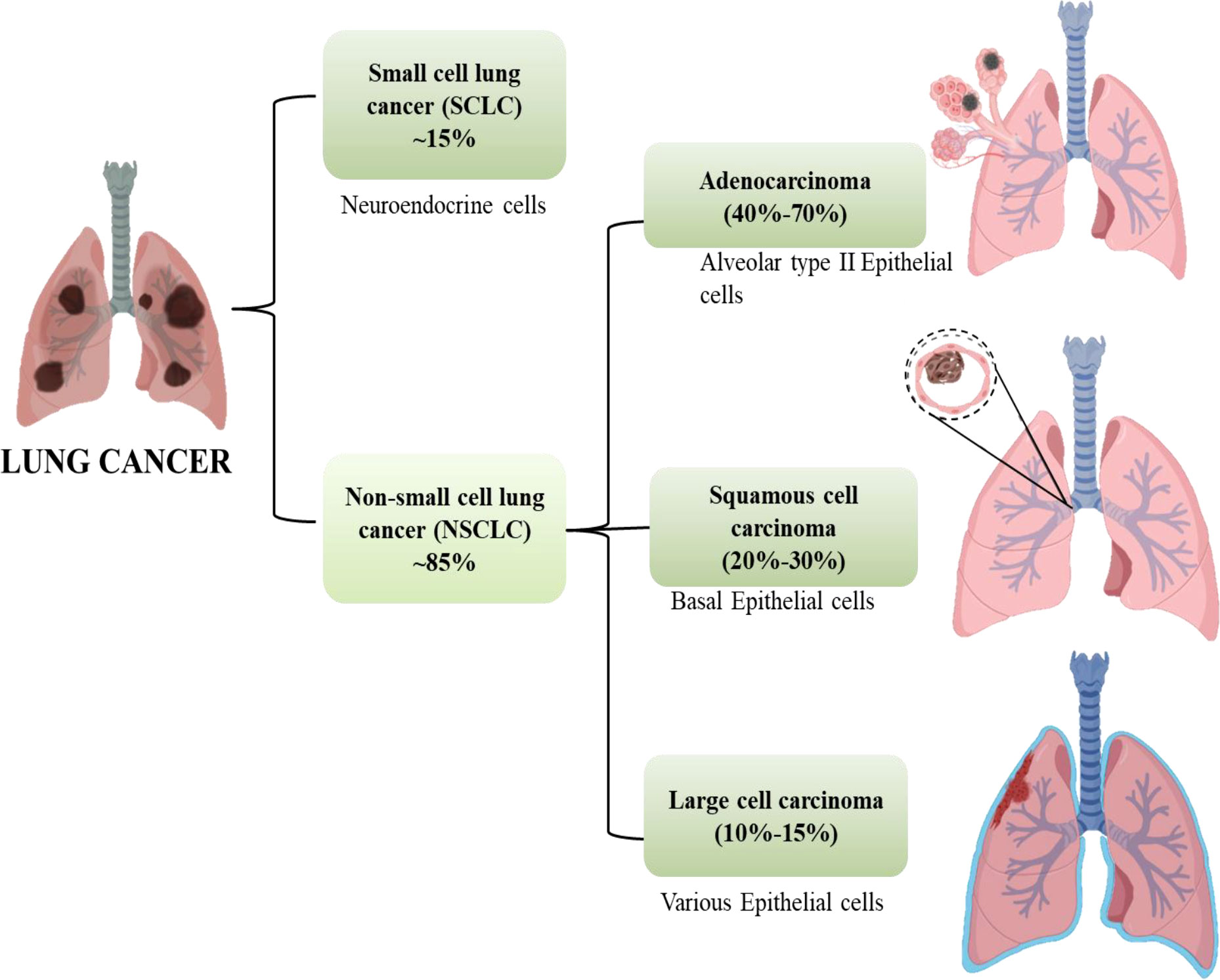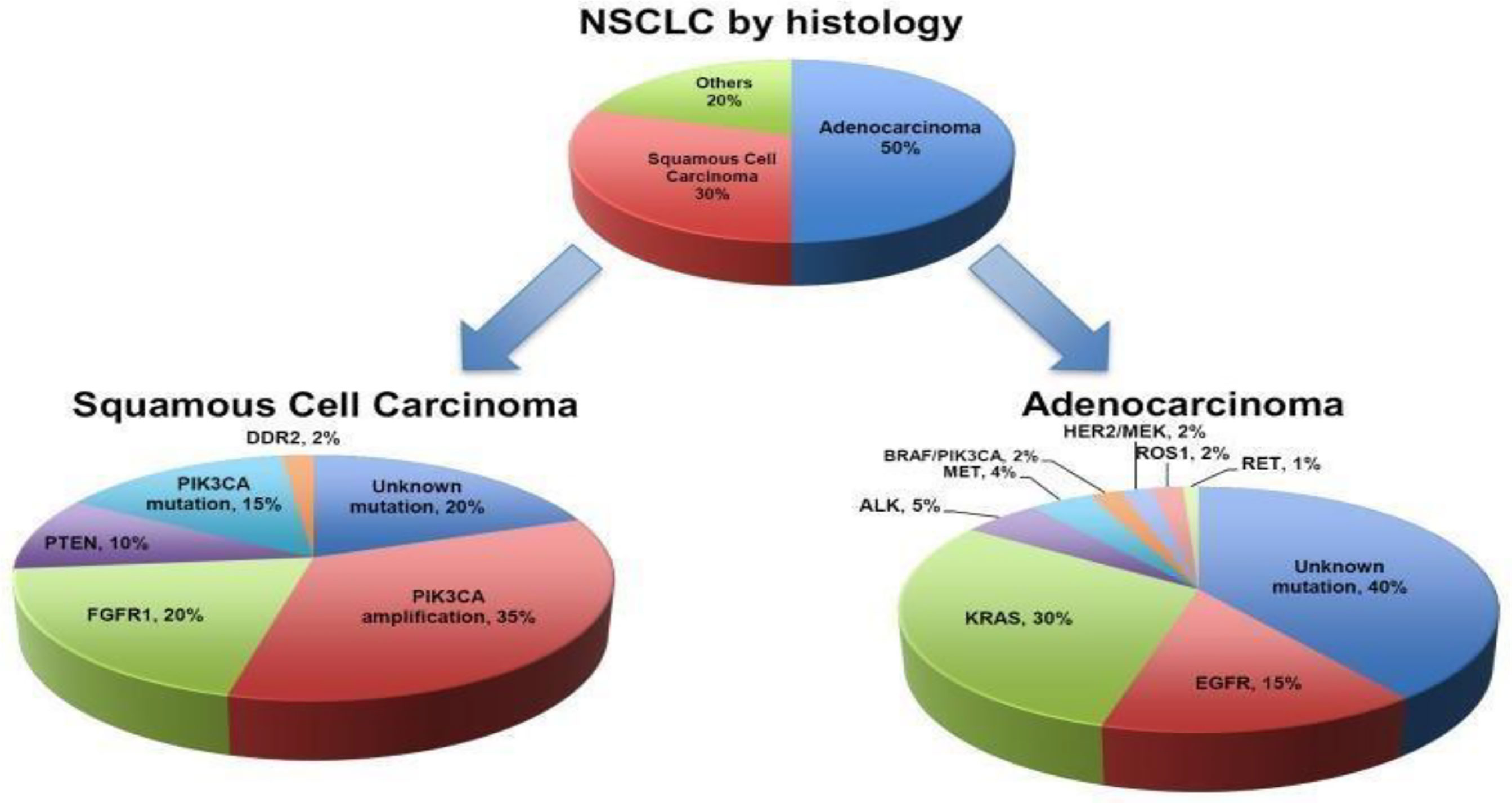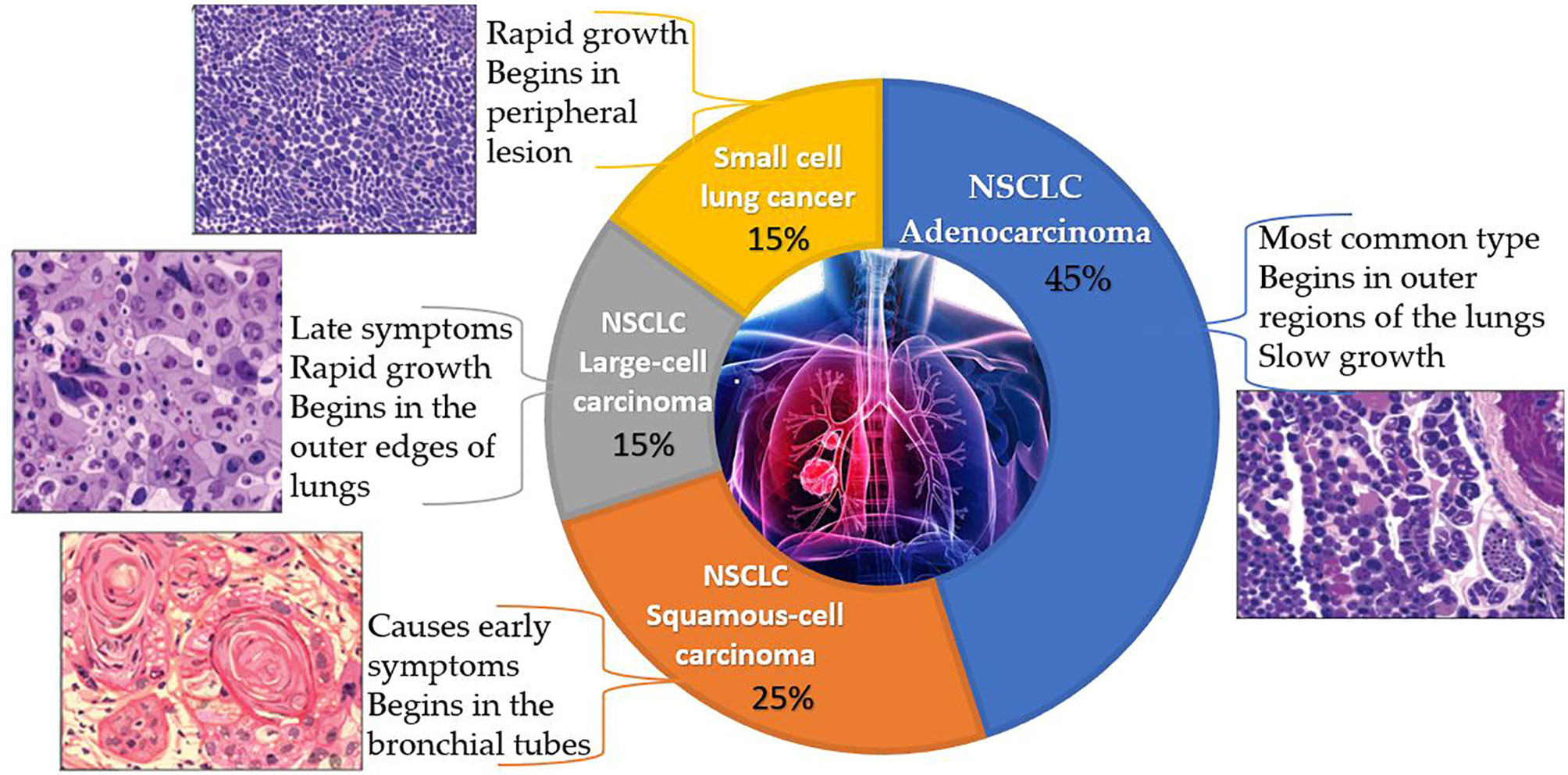Understanding Non-Small Cell Lung Cancer: Non Small Cell Lung Cancer

Non-small cell lung cancer (NSCLC) is the most common type of lung cancer, accounting for about 85% of all lung cancer cases. It’s a serious condition, but with early detection and treatment, it can be managed effectively.
Subtypes of Non-Small Cell Lung Cancer
NSCLC is categorized into three main subtypes, each with its unique characteristics and treatment approaches.
- Squamous cell carcinoma: This subtype is most commonly found in the central airways of the lungs and is often linked to smoking. It tends to grow slower than other NSCLC subtypes.
- Adenocarcinoma: This subtype is the most common type of NSCLC, often found in the outer parts of the lungs and is frequently linked to smoking and environmental factors.
- Large cell carcinoma: This subtype is less common and can grow rapidly. It’s often found in the central airways or the outer parts of the lungs.
Common Symptoms Associated with Non-Small Cell Lung Cancer
The symptoms of NSCLC can vary depending on the location and size of the tumor. However, some common symptoms include:
- Persistent cough: A cough that doesn’t go away or gets worse over time can be a sign of NSCLC.
- Shortness of breath: Difficulty breathing, especially when exerting yourself, can be another symptom.
- Chest pain: Pain in the chest that worsens when you breathe deeply or cough can be a sign of NSCLC.
- Wheezing: A whistling sound when you breathe can be a symptom of NSCLC, especially if it’s accompanied by other symptoms.
- Hoarseness: A change in your voice or difficulty speaking can be a sign of NSCLC if the tumor is pressing on the vocal cords.
- Blood in the sputum: Coughing up blood can be a serious symptom of NSCLC.
- Loss of appetite and weight loss: These symptoms can occur if the tumor is affecting your digestive system.
- Fatigue: Feeling tired and weak can be a symptom of NSCLC.
Stages of Non-Small Cell Lung Cancer, Non small cell lung cancer
The stage of NSCLC describes the extent of the cancer’s spread. It’s important to know the stage of the cancer to determine the best treatment options.
- Stage I: The cancer is confined to the lung and hasn’t spread to nearby lymph nodes.
- Stage II: The cancer has spread to nearby lymph nodes or to nearby tissues in the lung.
- Stage III: The cancer has spread to lymph nodes in the chest or to other areas near the lung.
- Stage IV: The cancer has spread to distant organs, such as the brain, bones, or liver.
Risk Factors for Non-Small Cell Lung Cancer
Certain factors can increase your risk of developing NSCLC.
- Smoking: Smoking is the leading cause of NSCLC. The longer and more heavily you smoke, the greater your risk.
- Exposure to secondhand smoke: Even if you don’t smoke, being exposed to secondhand smoke can increase your risk of NSCLC.
- Exposure to radon: Radon is a radioactive gas that can be found in homes and can increase your risk of lung cancer.
- Exposure to asbestos: Asbestos is a fibrous material that can cause lung cancer if you’re exposed to it over a long period.
- Exposure to other carcinogens: Exposure to other carcinogens, such as air pollution, diesel exhaust, and certain chemicals, can also increase your risk of NSCLC.
- Family history: If you have a family history of lung cancer, you’re at a higher risk of developing the disease.
- Age: The risk of NSCLC increases with age.
- Genetic predisposition: Certain genetic mutations can increase your risk of NSCLC.
Diagnosis and Treatment Options

Once a doctor suspects you might have non-small cell lung cancer (NSCLC), they’ll need to confirm the diagnosis and determine the stage of the cancer. This information helps them decide the best treatment plan for you.
Diagnostic Methods
Several methods are used to diagnose NSCLC. These include:
- Chest X-ray: This is a common imaging test that can show abnormalities in the lungs, such as tumors. It’s often the first test used to screen for lung cancer.
- Computed tomography (CT) scan: A CT scan provides more detailed images of the lungs and surrounding tissues than a chest X-ray. It can help doctors determine the size, shape, and location of the tumor, as well as whether it has spread to other areas.
- Positron emission tomography (PET) scan: A PET scan uses a radioactive tracer to detect areas of increased metabolic activity, which can indicate the presence of cancer cells. This test can help determine the extent of the cancer and whether it has spread to other parts of the body.
- Bronchoscopy: This procedure involves inserting a thin, flexible tube with a camera into the airways to visualize the inside of the lungs. Biopsies can be taken during bronchoscopy to confirm the diagnosis and determine the type of cancer.
- Thoracentesis: This procedure involves inserting a needle into the chest cavity to remove fluid for analysis. If cancer cells are present in the fluid, it can confirm a diagnosis of NSCLC.
- Biopsy: A biopsy involves taking a sample of tissue from the tumor for microscopic examination. This is the definitive way to diagnose NSCLC and determine the type of cancer cells.
Treatment Approaches
Treatment options for NSCLC depend on several factors, including the stage of the cancer, the patient’s overall health, and their preferences. Common treatment approaches include:
- Surgery: Surgery is often an option for early-stage NSCLC. The goal of surgery is to remove the tumor and a margin of healthy tissue around it. Different types of surgery are available, depending on the location and size of the tumor.
- Chemotherapy: Chemotherapy uses drugs to kill cancer cells. It can be used to shrink the tumor before surgery, to treat cancer that has spread, or as a palliative treatment to relieve symptoms. It’s also used in combination with other therapies like radiation.
- Radiation therapy: Radiation therapy uses high-energy rays to damage and kill cancer cells. It can be used to shrink the tumor, relieve symptoms, or prevent cancer from returning after surgery.
- Targeted therapies: Targeted therapies are drugs that specifically target certain proteins or pathways involved in cancer cell growth and survival. They can be more effective than traditional chemotherapy and have fewer side effects. These are becoming increasingly common, particularly in cases where the tumor has specific mutations.
- Immunotherapy: Immunotherapy helps the body’s immune system fight cancer. It’s becoming more widely used to treat NSCLC, and it’s showing promising results.
Comparison of Treatment Options
| Treatment Option | Advantages | Disadvantages | Surgery | Can be curative for early-stage cancer, can remove the entire tumor | May not be an option for all patients, can have significant side effects, may not be effective for advanced cancer | Chemotherapy | Can shrink the tumor, can be used to treat cancer that has spread | Can have significant side effects, may not be effective for all types of cancer | Radiation therapy | Can shrink the tumor, can relieve symptoms | Can have side effects, may not be effective for all types of cancer | Targeted therapies | Can be more effective than traditional chemotherapy, can have fewer side effects | May not be effective for all types of cancer, can be expensive | Immunotherapy | Can stimulate the immune system to fight cancer, can have long-lasting effects | Can have side effects, may not be effective for all types of cancer |
|---|
Clinical Trials
Many clinical trials are ongoing to investigate new and innovative treatments for NSCLC. These trials are essential for advancing our understanding of the disease and developing more effective therapies.
- Trial investigating the use of immunotherapy combined with chemotherapy in patients with advanced NSCLC.
- Trial evaluating the effectiveness of a new targeted therapy for patients with NSCLC that has specific genetic mutations.
- Trial exploring the use of radiation therapy combined with immunotherapy in patients with early-stage NSCLC.
Living with Non-Small Cell Lung Cancer

Living with a diagnosis of non-small cell lung cancer (NSCLC) can be a challenging journey. It’s important to understand the potential side effects of treatment, explore supportive care options, and find resources to help you navigate this experience. This section will provide information on managing the emotional and psychological challenges of living with NSCLC.
Potential Side Effects of NSCLC Treatments
Treatment for NSCLC can effectively target cancer cells, but it can also cause side effects. These side effects vary depending on the type of treatment and individual factors. It’s important to discuss potential side effects with your healthcare team so you can be prepared and manage them effectively.
- Chemotherapy: Common side effects of chemotherapy include fatigue, nausea, vomiting, hair loss, and mouth sores. These side effects are often temporary and can be managed with medications and supportive care.
- Radiation Therapy: Radiation therapy can cause skin irritation, fatigue, and changes in appetite. These side effects are usually temporary and resolve after treatment is completed.
- Targeted Therapy: Targeted therapies are designed to target specific proteins or pathways involved in cancer growth. Common side effects include skin rash, diarrhea, and fatigue.
- Immunotherapy: Immunotherapy helps your body’s immune system fight cancer. Common side effects include fatigue, skin rash, and diarrhea.
- Surgery: Surgery can cause pain, swelling, and difficulty breathing. These side effects usually subside over time.
Supportive Care Options
Supportive care plays a crucial role in improving quality of life for individuals living with NSCLC. It aims to manage symptoms, reduce side effects, and provide emotional and practical support.
- Palliative Care: Palliative care focuses on relieving symptoms and improving quality of life for individuals with serious illnesses. It provides pain management, symptom control, emotional support, and practical assistance. Palliative care can be provided alongside curative treatments.
- Rehabilitation Services: Rehabilitation services can help individuals regain strength, improve mobility, and manage fatigue. These services may include physical therapy, occupational therapy, and speech therapy.
- Nutrition Counseling: Nutritional counseling can help individuals maintain a healthy weight and ensure they receive adequate nutrition during treatment. This can be especially important for managing side effects like nausea and vomiting.
Resources and Support Groups
There are numerous resources and support groups available for individuals living with NSCLC and their families. These resources can provide information, emotional support, and practical assistance.
- American Lung Association: The American Lung Association offers resources and support for individuals with lung cancer, including information about treatment options, clinical trials, and support groups. Their website is a valuable resource for finding local support groups and resources.
- CancerCare: CancerCare provides free, professional support services to individuals with cancer and their families. They offer counseling, financial assistance, and educational programs.
- National Cancer Institute: The National Cancer Institute provides comprehensive information about cancer, including NSCLC. Their website offers information about treatment options, clinical trials, and research updates.
- Support Groups: Joining a support group can provide a sense of community and connection with others who understand the challenges of living with NSCLC. Support groups offer a safe space to share experiences, ask questions, and receive emotional support.
Managing Emotional and Psychological Challenges
Living with NSCLC can be emotionally and psychologically challenging. It’s important to develop coping strategies to manage these challenges and maintain a sense of well-being.
- Talk to Your Healthcare Team: Your healthcare team can provide emotional support and guidance as you navigate the challenges of living with NSCLC. Don’t hesitate to talk to them about your concerns and feelings.
- Connect with Loved Ones: Sharing your experiences with loved ones can provide emotional support and a sense of connection. Encourage open communication and seek support from family and friends.
- Explore Therapy: Therapy can provide a safe space to process emotions, develop coping strategies, and improve mental well-being. Consider individual therapy, group therapy, or support groups.
- Practice Mindfulness and Relaxation Techniques: Mindfulness and relaxation techniques, such as deep breathing, meditation, or yoga, can help manage stress and anxiety. These techniques can promote relaxation and improve overall well-being.
- Set Realistic Goals: It’s important to set realistic goals and expectations. Focus on what you can control and celebrate small victories along the way. Avoid comparing yourself to others and focus on your own journey.
- Seek Support from Others: Don’t hesitate to ask for help when you need it. Lean on loved ones, friends, or support groups for emotional support and practical assistance.
Non small cell lung cancer – Non-small cell lung cancer (NSCLC) is a serious condition that can affect anyone, even athletes at the top of their game. It’s great to see that athletes unlimited is getting all four of its womens pro leagues on ESPN platforms , as it means more exposure and support for women’s sports.
Hopefully, increased awareness can also lead to better understanding of health issues like NSCLC, and inspire people to prioritize their health, whether they’re professional athletes or not.
Non-small cell lung cancer (NSCLC) is a serious condition, but even amidst serious news, folks still find time for fun. The NWSL championship saw strong viewership despite a minor dip, showing that people still crave excitement and entertainment. Similarly, research into NSCLC is ongoing, and with each new discovery, we inch closer to better treatments and outcomes.
